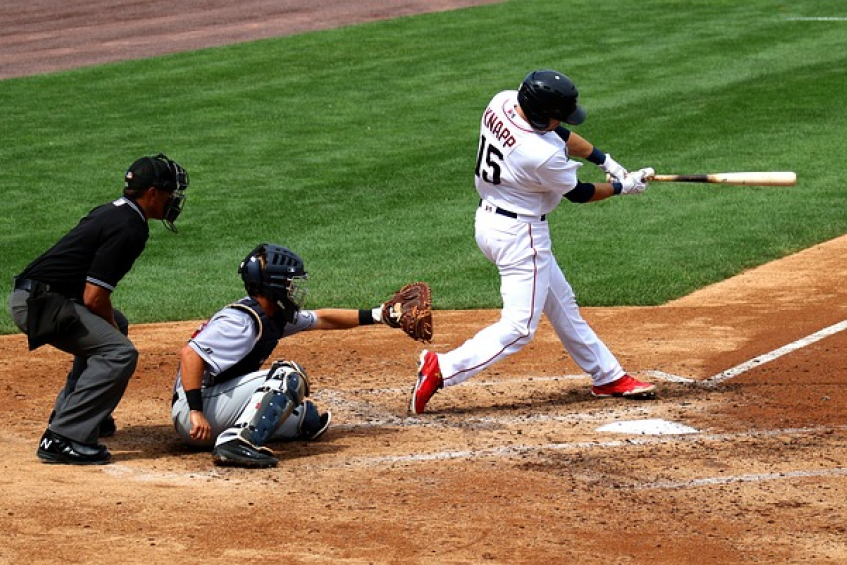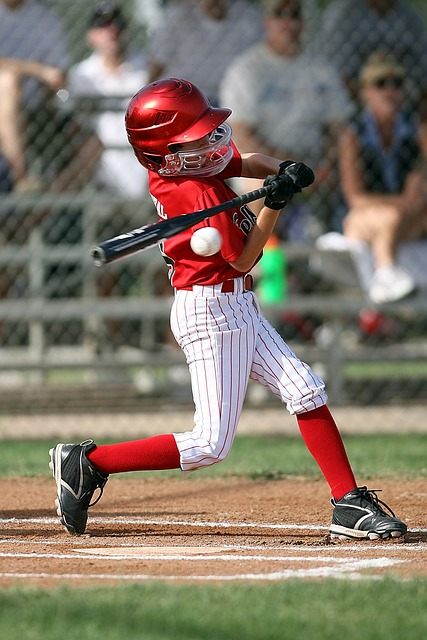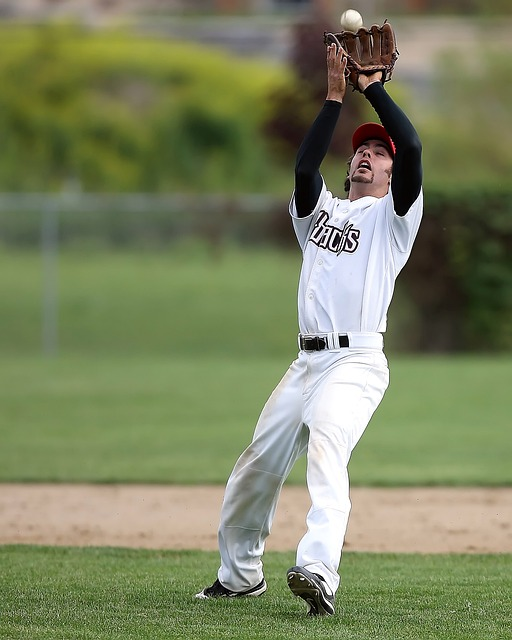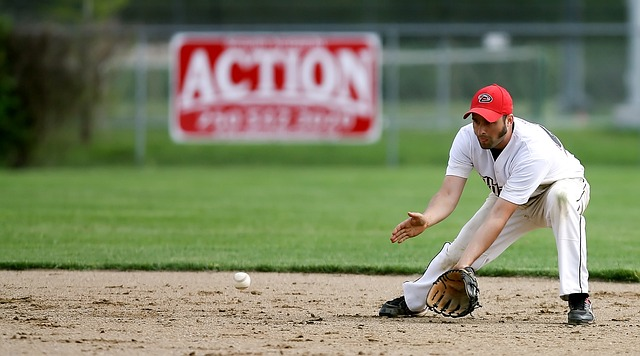
Hey there, baseball fans and curious minds alike! I'm thrilled to welcome you to this exploration of one of the most significant aspects of our beloved sport - the art of batting. But before we dive deep into the crux of the matter, let's set the stage by discussing the basics of baseball.
Baseball, a game of strategy, skill, and statistics, has left an indelible mark on the hearts of millions of fans worldwide. Rooted in tradition and yet evolving with time, baseball has a charm that transcends generations. It's a sport where two teams, each having nine players, face off in a battle of offense and defense, all within the confines of a diamond-shaped playing field.
Now, you may ask, what makes baseball unique? Well, it's the intricate blend of individual performance and team strategy that sets baseball apart. And one role that truly embodies this blend is that of the batter. When the batter stands in the batter's box, bat in hand, eyeing the pitcher as he gets ready to hurl the ball, it's not just about power; it's also about precision, timing, and a whole lot of strategy.
In this post, we'll peel back the layers of this pivotal role, delving into the rules of baseball that govern batting, the types of batters you'll come across in a game, and how to score runs - the ultimate goal in any baseball game. Whether you're a seasoned fan or a newbie to the world of Major League Baseball, there's something for everyone. So grab your mitt, step into the batter's box with me, and let's hit this topic out of the park!
In the sections to follow, we will explore questions like "What are the basics of baseball?", "What does batter mean in baseball?", "Is it batting or hitting?", "How do you play MLB?" and many more. Stay tuned!
Note: In this blog post, I will use terms like "home plate", "third base", "fair ball", "foul ball", "batter's box", "strike zone", etc. frequently. Don't worry if you're unfamiliar with these terms; we will explain each one in detail as we go along. Let's dive in!

Before we step up to the plate and focus on the role of a batter, let's take a moment to familiarize ourselves with the fundamental aspects of baseball. Understanding the game's structure and rules will provide a solid foundation for comprehending the intricacies of batting.
Baseball is played between two teams, each consisting of nine players. The objective of the game is for the offensive team to score runs while the defensive team aims to prevent them. The game unfolds over a series of innings, with each team taking turns playing offense and defense.
Now, let's walk through the key elements of a baseball game:
The Diamond-Shaped Playing Field: A baseball field features a diamond-shaped layout. The bases, comprising first base, second base, third base, and home plate, form the corners of the diamond. The distance between the bases is approximately 90 feet.
Positions: Each player on the defensive team has a specific position on the field. These positions include the pitcher, catcher, first baseman, second baseman, third baseman, shortstop, and three outfielders: left fielder, center fielder, and right fielder.
Innings: A baseball game consists of a set number of innings. Each inning is divided into two halves: the top half and the bottom half. The top half is when the visiting team plays offense, while the bottom half is when the home team takes its turn at bat. In professional baseball, a standard game consists of nine innings.
Outs: An out is recorded when the defensive team successfully retires three players from the offensive team. This can be achieved through various means, such as catching a batted ball in the air, tagging a runner with the ball, or throwing the ball to a base before the runner reaches it.
Pitching and Fielding: The game begins with the pitcher, a member of the defensive team, throwing the ball toward the batter at home plate. The pitcher's objective is to deliver a legal pitch within the strike zone while attempting to deceive the batter. The fielding team works together to catch batted balls, throw them to the appropriate bases, and prevent the offensive team from scoring runs.
Now that we've covered the basic framework of baseball, we can shift our focus to the heart of the game—the role of a batter. In the next section, we'll explore what it means to step into the batter's box and wield the bat with precision and finesse.

Now that we've laid the groundwork with the basics of baseball, it's time to dig deeper into the fascinating role of a batter. The batter is a central figure in the game, standing in the batter's box, ready to face the pitcher's challenge. Let's explore the intricacies of this role and the key aspects associated with it.
The Batter's Box: When a batter steps up to the plate, they enter a designated area called the batter's box. It's a rectangular area located adjacent to home plate. The batter must stand within the confines of the batter's box during their at-bat, which ensures fairness and consistency in the game.
The Proper Batter: In baseball, the term "proper batter" refers to the next batter, who is next in the batting order and due to bat according to the team's lineup. Following the designated batting order ensures that each player has an opportunity to contribute to the team's offense.
Time at Bat: When a batter steps into the batter's box, they receive an opportunity to hit the ball and potentially reach base. This period is known as their "time at bat." A batter's time at bat concludes when they reach base, get out, or the half-inning their time at bat ends.
The Strike Zone: The strike zone is a crucial concept in baseball. It refers to the area over home plate that extends from the batter's knees to the midpoint between their shoulders and their belt. Umpires determine whether a pitch thrown by the pitcher falls within this zone, and if the batter fails to swing at a pitch within the strike zone, it is deemed a "strike."
Foul Ball: When a ball is hit outside the foul lines, it is considered a foul. A foul counts as a strike, but it cannot be caught for an out. If a player hits a foul after already having two strikes, they continue their at-bat until they hit the ball fair, get out, or reach base.
The Third Strike Rule: In baseball, a batter is allowed three strikes before they are called out. If a batter swings and misses the third strike or fails to swing at a pitch within the strike zone, it results in a strikeout, and the batter is retired. However, if the catcher fails to catch the third strike cleanly, the batter may attempt to reach first base.

In the intricate world of baseball, there are specific rules that govern the art of batting. Understanding these rules is crucial for both players and fans alike. So let's dive into the rules of baseball that revolve around batting and explore the nuances that shape this exciting aspect of the game.
One of the unique rules in baseball is the infield fly rule. This rule comes into play when there are runners on base and fewer than two outs. If a fair fly ball is hit, and in the umpire's judgment, it could be easily caught by an infielder, the batter is automatically declared out. The infield fly rule prevents the defensive or fielding team, from intentionally dropping the ball to execute a double play. Learn more about What is the Infield Fly Rule Here.
When the ball is hit within the foul lines that mark the boundaries of the field, it is considered a fair ball. A fair ball is in play and can be fielded by the defense. On the other hand, if the ball is hit outside the foul lines, it is a foul. A foul ball is not in play, and it is counted as a strike if it is not caught. However, a batter cannot be declared out on a foul, regardless of the number of strikes.
As mentioned earlier, a batter is allowed three strikes before being called out. If a batter swings and misses the third strike or fails to swing at a pitch within the strike zone, it results in a strikeout, and the batter is retired. However, if the catcher fails to catch the third strike cleanly, the batter may attempt to reach first base. Learn more about the third strike rule in baseball here.
Once a batter makes contact with a fair ball or receives a walk (four balls from the pitcher), they become a runner. Their goal is to advance to the bases and eventually score a run for their team. A batter runner must touch first base and subsequently advance to the other bases to score.
In a baseball game, there are two halves to each inning. The visiting team plays offense in the top half, while the home team plays offense in the bottom half. After the defense records three outs, the teams switch sides, with the opposing taking the field and the second team taking their turn at bat. Learn more about which team bats first in baseball here.
In the intricate tapestry of baseball, you'll encounter various types of batters, each bringing their unique skills and strategies to the plate. Let's explore the different types of batters you're likely to come across in a game and understand their roles within the team.
In some leagues, such as the American League in Major League Baseball, a designated hitter (DH) is used. The DH is a player who solely focuses on hitting and does not play a defensive position. They take the place of the pitcher in the batting order, adding a powerful offensive presence to the lineup. Learn more about the designated hitter rule in baseball here.
A pinch hitter is a player who substitutes for another batter in the lineup. Typically, a pinch hitter is called upon when the manager believes they can provide a better chance of success in a particular situation. Pinch hitters often specialize in hitting against specific types of pitchers or excel in clutch situations. Find out about pinch hitters in baseball here.
The leadoff hitter is the batter who occupies the first position in the batting order. Their primary role is to set the tone for the offense by getting on base and initiating scoring opportunities for the rest of the lineup. Leadoff hitters often possess speed, plate discipline, and the ability to work counts effectively.
Also known as the "fourth batter" or "number four hitter," the cleanup hitter is responsible for driving in runs. Typically, this batter has power and a knack for hitting in crucial situations when there are runners in scoring position. Their job is to bring those runners home and put runs on the scoreboard.
The ninth batter in the lineup is often referred to as the "bottom of the order" or "number nine hitter." While traditionally considered the weakest hitter in the lineup, the ninth batter plays an essential role. They help bridge the gap between the bottom and top of the lineup, setting the stage for the leadoff hitter to start the next inning.
Understanding the different types of batters and their roles within the lineup adds depth to the game. A well-constructed batting order takes advantage of each batter's strengths, creating a balanced and potent offensive attack.
The crack of the bat, the soaring ball, the thunderous cheers—these are the moments that electrify a baseball game. In this section, we'll explore the connection between batting and scoring runs, the ultimate objective in baseball. Let's delve into the fascinating world of hits, runs, and the strategies behind putting numbers on the scoreboard.
When a batter makes contact with the ball and safely reaches base without any defensive errors, it is recorded as a hit. Hits can take different forms, including singles (reaching first base), doubles (reaching second base), triples (reaching second and third bases base), and home runs (clearing all bases and touching home plate). Each hit contributes to the offensive momentum and offers an opportunity to advance runners and score runs.
When a batter successfully reaches base, they become a base runner. The objective of base runners is to advance from base to base, ultimately reaching home plate to score a run. Base runners can advance through various means, such as stealing a base, tagging up after a caught fly ball, or advancing on a teammate's hit.
Runs are the lifeblood of a baseball game, and they are scored when a base runner successfully touches home plate. The offensive team's goal is to score as many runs as possible during a game, while the defense works diligently to prevent them. The strategic interplay between the offense and defense, along with the skills of the batters and base runners, shape the ebb and flow of the game.
Batting Order and Run Production
The batting order plays a vital role in generating run production. Batters in key positions, such as the leadoff and cleanup hitters, often have a significant impact on scoring runs. The lineup's design, taking into account each batter's strengths and abilities, aims to maximize the team's offensive output.
Batting in baseball is not just about swinging the bat; it involves strategy and decision-making. Batters and base runners must consider various factors, such as the count (the number of balls and strikes), the number of outs, the score, and the game situation. These factors influence decisions like when to swing, when to attempt a steal, or when to sacrifice a bunt to advance a runner.
While batting captures the attention and excitement of the fans, it's important to remember that baseball is a two-sided game. The defense plays a crucial role in preventing the offensive team from scoring runs and securing victories. In this section, we'll delve into the defensive aspect of baseball and explore the roles and responsibilities of the defense.
The defense consists of nine players who take their positions on the field to field the ball and make plays. Each player has a specific defensive position, such as pitcher, catcher, infielders (first baseman, second baseman, shortstop, and third baseman), and outfielders (left fielder, center fielder, and right fielder). The players work together to execute defensive plays and minimize the offensive team's scoring opportunities.
When a batter hits a ground ball along the field, the defensive players aim to field it cleanly and make an out. Infielders play a vital role in fielding ground balls, using their quick reflexes and skillful glove work to control the batted ball, and make accurate throws to the appropriate base. The objective is to retire the batter or prevent base runners from advancing.
Fly balls occur when a batter hits the ball high into the air. Outfielders are responsible for tracking and catching these fly balls. They position themselves strategically to cover the outfield and make crucial catches. A well-executed catch can result in an out or prevent base runners from advancing.
The double play is an exciting and impactful defensive play. It occurs when the defense records two outs in one continuous play. This typically happens when a ground ball is hit to an infielder, who fields the ball, tags or forces out a runner, and then throws to another infielder covering the next base. Double plays can effectively shift the momentum in favor of the defense and thwart potential scoring opportunities. See these posts about the 6-4-3 double play and GIDP for more.
Just like the offense, the defense employs strategies and tactics to counter the offensive team. This includes defensive shifts, where fielders position themselves strategically based on the tendencies of the batter, and intentional walks, where the pitcher deliberately throws four balls outside the strike zone to put a particular batter on first base rather than risk a hit.
The infield fly rule is a unique rule in baseball that comes into play when there are runners on base and fewer than two outs. It is designed to prevent the defense from gaining an unfair advantage by intentionally dropping a pop-up fly ball to initiate a double play. When the umpire determines that an infield fly can be caught by an infielder with ordinary effort, the batter is automatically declared out, regardless of whether the ball is caught. This rule ensures fairness and protects the team on offense by eliminating the possibility of an easy double play through a deliberate infield fly drop.
The defensive aspect of baseball showcases the athleticism, precision, and teamwork required to excel in the game. From fielding ground balls to making spectacular catches, the defensive players play an integral role in shaping the outcome of each game.

In the intricate dance between offense and defense, the game of baseball is divided into a series of innings. Each inning brings its own set of opportunities and challenges for both teams. In this section, we'll explore the concept of innings, their significance, and some interesting facts surrounding this aspect of the game.
The Concept of Innings: An inning is a unit of play in baseball, consisting of a turn for each team to play offense and defense. Each team has the opportunity to bat and attempt to score runs in their half of the inning, while the opposing team plays defense and tries to prevent runs from being scored.
Nine Innings: A standard baseball game in professional leagues, such as Major League Baseball, is composed of nine innings. Each team gets the chance to play offense and defense for nine innings, with the objective of outscoring the opponent. However, in some cases, such as extra-inning games, the number of innings can extend beyond nine until a winner is determined.
Switching Sides: After the defense records three outs in an inning, the teams switch sides. The team that was previously on defense takes their turn at bat, and the team that was on offense transitions to the field to play defense. This switching of sides occurs after every half-inning, creating a dynamic back-and-forth rhythm to the game.
The Importance of Outs: The objective of the defense is to retire the offensive players and record outs. Each half of an inning, the defense aims to secure three outs to end their defensive responsibilities. Outs are recorded through various means, such as catching a batted ball, striking out a batter, or forcing a runner out on a base.
Extra Innings: In situations where the game is tied after nine innings, additional innings, known as extra innings, are played. Each team gets the opportunity to bat and play defense until a winner is determined. Extra-inning games often add an element of excitement and suspense as teams battle to secure the victory.
Inning Game Strategy: As the game progresses, strategies may come into play based on the score, the number of outs, and the game situation. Managers make decisions regarding pitching changes, pinch hitters, or defensive shifts to maximize their team's chances of success in each inning.
Innings are the building blocks of a baseball game, dividing the gameplay into manageable segments. The back-and-forth nature of innings adds to the suspense and strategic elements of the sport.

Throughout its rich history, baseball has evolved in various ways, from rule changes to shifts in gameplay and strategy. In this section, we'll explore some significant changes and milestones that have shaped the game we know today.
The Foul Strike Rule (1903): In 1903, a crucial rule change known as the foul strike rule was implemented. Prior to this change, foul balls were not counted as strikes. The rule change aimed to reduce the number of deliberate fouls by batters to prolong their at-bats. This adjustment had a profound impact on the dynamics of the game and increased the importance of pitcher-batter confrontations.
Introduction of the Designated Hitter (1973): In 1973, the MLB introduced the designated hitter (DH) in the American League. The DH is a player who takes the place of the pitcher in the batting order, solely focusing on hitting. This innovation added an extra dimension to the game, allowing teams to optimize their offensive lineups and provide more excitement for fans.
Expansion of Major League Baseball: Over the years, the MLB has expanded, welcoming new teams into the fold. This expansion has allowed the game to reach more markets and cultivate a broader fan base. The addition of new teams has brought fresh talent and increased competition, contributing to the growth and popularity of the sport.
Technological Advancements: Baseball has embraced technological advancements that have enhanced the game in various ways. The introduction of instant replay has allowed for more accurate umpire decisions, reducing controversies and ensuring fairness. Advanced analytics and data-driven strategies have revolutionized player evaluations, game strategies, and player development.
Changes in Playing Styles and Strategies: Baseball has witnessed shifts in playing styles and strategies over time. As the game evolved, new approaches to hitting, pitching, and fielding emerged. From the rise of power hitters and the prevalence of specialized relief pitchers to the implementation of defensive shifts, these changes have added depth and intrigue to the game.
Globalization of Baseball: Baseball's reach has extended beyond its traditional strongholds, with the sport gaining popularity globally. Professional Baseball has seen increased international player participation, expanding the game's cultural diversity and attracting fans from around the world. International competitions, such as the World Baseball Classic, have further showcased the global appeal and competitive nature of the sport.
As baseball continues to evolve, it remains a beloved pastime, captivating fans with its rich history and dynamic nature. The sport's ability to adapt and embrace change has ensured its enduring legacy and continued growth.

As we conclude this journey through the art of batting in baseball, we've explored the fundamentals, rules, and various aspects that make it a captivating and unique sport. From the role of the batter and the rules they must adhere to, to the different types of batters and the strategies employed, we've gained a deeper understanding of the intricacies that make batting in baseball a thrilling endeavor.
Throughout the course of this blog post, we've covered topics such as "baseball rules," "infield fly rule," "batter hits," "fair ball," "rules of baseball," "defensive team," "batter's box," "strike zone," and many others. By incorporating these keywords, we've provided comprehensive information to enlighten both novice and seasoned fans of the game.
In our exploration, we've answered common questions such as the basics of baseball, how points are scored, the number of innings, and the rules surrounding batting. We've also dived into the different types of batters, the significance of innings, the defensive aspect of the game, and the evolution of baseball itself.
Baseball is not just a game; it's a timeless tradition that has captured the hearts of millions around the world. It embodies teamwork, strategy, and a never-ending pursuit of excellence. Whether you're a player stepping up to the plate or a fan cheering from the stands, the art of batting in baseball unites us in the love of this cherished sport.
So, as you witness the crack of the bat, the soaring fly ball, or the daring stolen base, remember the intricacies we've explored together. Embrace the excitement and marvel at the rich tapestry that is baseball batting.
Thank you for joining us on this journey, and may your love for the game continue to grow with each swing of the bat.
Chris Sloan is a former baseball league commissioner and travel baseball coach who has made significant contributions to the sport. In 2018, he founded selectbaseballteams.com, a website that helps parents find youth and travel baseball teams in their local areas. Since its launch, the website has experienced impressive growth, offering a wealth of resources including teams, news, tournaments, and organizations. Chris's unwavering passion for baseball and his innovative approach to connecting parents with quality baseball programs have earned him a respected reputation in the baseball community, solidifying his legacy as a leading figure in the world of youth and travel baseball.
There are 0 comments on "Baseball Batting Rules and Other Baseball Rules to Know"
CameronPugh says:
"Such a unique perspective on the game..."
On Such a unique perspective on
chandler allen says:
"Hi my name is chandler, i’ve enjoyed..."
On Wanting to tryout for summer ball. as an 18 year old
david graham says:
"With no current MLB team in Canada,..."
On With no current MLB team in